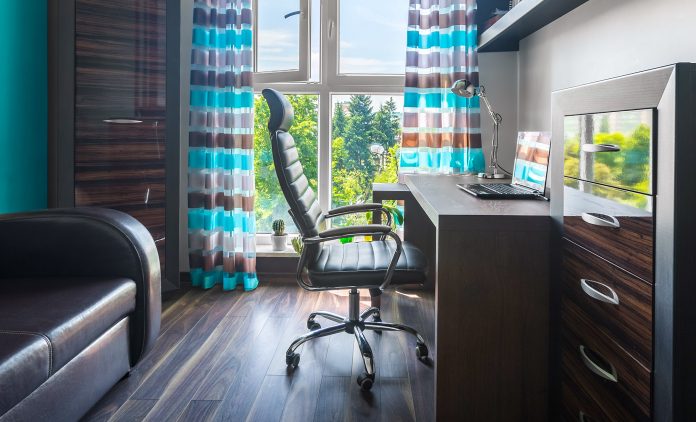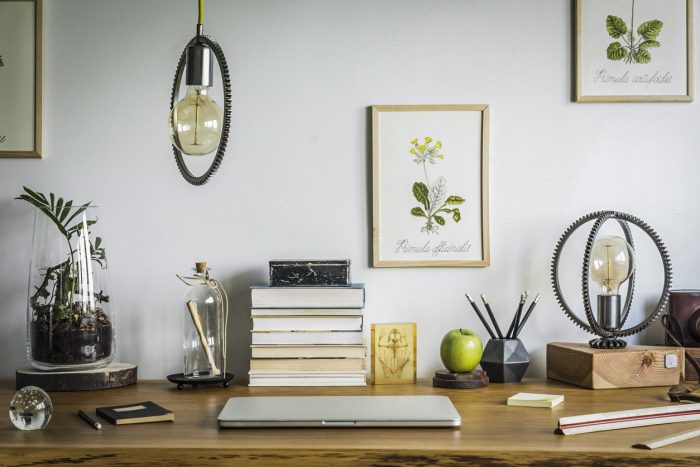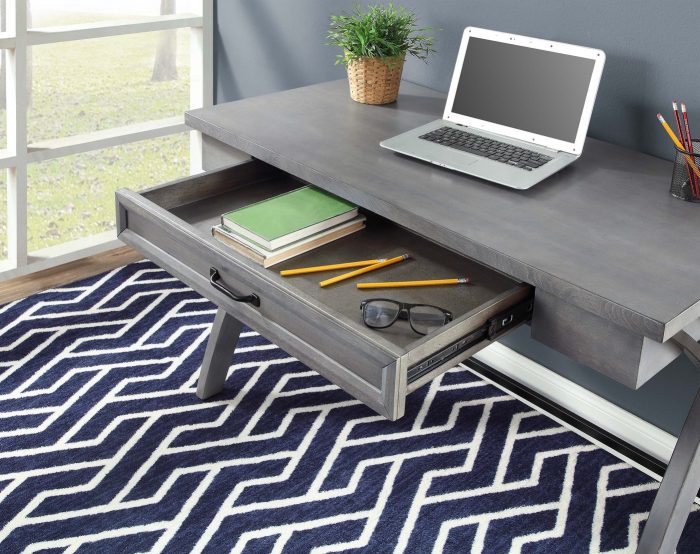Working from home certainly comes with its perks. Between reduced travel time, savings on gas/transit fare/meals and the comfort of working in your pajamas, telecommuting is often a respite from the rigidity and mundane nature of a formal office. The perks of working from home, however, are wholly dependent upon you actually working. While there have been countless studies to prove the increase in productivity levels amongst employees who telecommute or those who are self-employed and work from home, there are a few key elements needed to create a functional workspace that’s conducive to both comfort and productivity.
Here are five ways to create your own productive home office.
Create A Designated Workspace
Between the regular goings-on in your home, other members of your family who may also be home and outside interruptions, there are countless distractions you’re challenged to overcome when working from home. This is why it’s important to designate your workspace as separate from your personal space in your home. Similar to the advice of only using your bed only for sleeping, you should cordon off a space for yourself that you only use for work. This space will largely vary depending on the space available in your home and the kind of work you’re tasked with. From a closed-off room to a desk in the corner of your living area, or even a workspace at the end of your kitchen table, any space can do the job so long as you use it for work—and work only.
Choose The Right Furniture
Choosing the right furniture and accessories for your home office is paramount to creating a functional and comfortable work environment. It is, after all, hard to focus when you’re busy remedying an aching back and straining to see your screen. Key to comfort is investing in the right office chair. Find one that suits your needs by testing it out in your local furniture store before purchasing, and ensure you make an effort to sit in an ergonomically correct position at your desk. If sitting for long periods of time doesn’t bode well with you, standing desks are great alternatives and many are now made to be adjustable allowing you to position it as a sitting desk when needed. You may also consider investing in an anti-glare screen for your computer, which will help to improve your concentration.
There’s no doubt that taking breaks throughout your day is vital to your mental and physical health. As such, it may be a good idea to include some light exercise equipment in your office space. This can include: resistance bands, light weights or even a small treadmill or step machine. Notwithstanding the health benefits of frequent exercise, incorporating physical activity as part of your breaks will help you shift gears, re-focus and re-energize throughout the day.
Organize Your Workspace
There is perhaps nothing more distracting than clutter. Not only does clutter affect your mental capacity to do your work, but having to sift through piles of papers or stacks of stationery can waste a lot of your time. A good rule of thumb is to consciously make an effort to clean your work area every time you leave your desk. While this may sound tedious, it’s good practice whether you’re leaving for lunch or for the end of the day to tidy up what doesn’t belong. Barring items you use on a regular basis, all others should be tucked away in their place, and if any item doesn’t have a specific work purpose, it doesn’t belong in your workspace.
Making use of digital tools can also help prevent clutter by eliminating paper. These tools, such as cloud-based storage or digital versions of office supplies and gadgets, can eliminate the use of filing cabinets and printers improving organization. Alternatively, multipurpose furniture can be a good investment if you cannot fully digitize your office. Finally, to ensure your home office is operating at maximum efficiency, update your tech often and tidy up all cables.
Establish & Maintain Working Hours
While you may not need to conform to the demands of a traditional office space, it’s important to establish working hours for yourself in your home office, and stick to them. If you don’t have a parent company dictating your availability, you may find that you have quite a bit of flexibility with your hours; whether you decide to adhere to a “typical” 9-to-5 schedule or not is up to you. This is, of course, also dependent on the nature of your work and whether or not you have clients who work during traditional business hours. In addition to establishing your hours, it’s also important to maintain them. You can adjust your hours as needed, but sticking to a set schedule will help maintain your productivity and focus, and is useful if you’re dealing with external clients and stakeholders.
While working from home may seem (and, often times is) a respite from the rigidity of a traditional office, there are a few key elements required to ensure your home office is conducive to both productivity and comfort. Sectioning off a space for yourself and maintaining that space by furnishing it with practical and ergonomic furniture, as well as frequently organizing and decluttering, can dramatically improve your focus and productivity. Check out Leon’s Canada for all of your home office furniture needs, and ensure you’re getting the most out of working from home.
Find a Home-Based Business to Start-Up >>> Hundreds of Business Listings.



















































